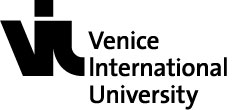F2012 Representations of Time and Space in Western and Far Eastern Cultures
Professors
Schedule
Course description
The aims of the course is to introduce the students to the history of the representation of space and time in Western and Far Eastern art and culture. The course will start from the analysis of the anthropological positions that have historically distinguished the two ethno-cultural fields. It also will provide a closer examination of why, despite the development during the Western Renaissance of linear perspective, pseudo-axonometry has continued to be privileged by Far Eastern art. We will try to understand why perspective and axonometry quickly became the symbolic forms for different philosophical and religious contextualities. Differing representations of light and shadow will be also particularly underlined, revealing some uncanny differences in its uses. The students will employ different materials coming not only from the history of art and figuration, but also from literature, music and cinema. Space/time representation will be seen, from the course’s critical point of view, a significant part of World immaterial cultural heritage, crossing all the fields of figurative art, from East to West. The major focus of the course will be centered in particular on the critical analysis of a masterpiece of Cultural Heritage, the convent of SS. Trinità dei Monti in Rome: the students will first be introduced to the study of its anamorphic frescoes and catoptric sundial. They will be introduced to new ways of perceiving and appreciating those masterpieces, with the support of digital tools. The use of video mapping, laser-scanning surveys and augmented reality will be useful to comprehend the secret life of these extraordinary works of art.
Learning outcomes of the course
The expected learning outcomes for the students will be the development of a comparative approach to Western and Eastern forms of representation. This will be achieved by means of the analytic observation and the documentary study of certain masterpieces. The course aims to enhance students’ critical capacities in the exegesis of images characterized by a strong geometric and symbolic content. The final outcome of the course will be to develop in each student a strong idea that representation is a powerful tool through which to understand the global artistic cultural heritage.
Teaching and evaluation methods
The course will be held with lectures, and with the aid of multimedia materials. The students’ learning status will be evaluated with two short individual exercises during the course, in the form of seminars, each counting for the 30% of the final grade (30%+30%=60%). The remaining 40% will be given on the basis of the final exam, which will consist of a discussion about the themes developed during the course.
Bibliography
- DE ROSA, A., BORTOT, A. (2019), Anamorphosis: Between Perspective and Catoptrics, in Bharath Sriraman, ed., "Handbook of the Mathematics of the Artsand Sciences", Springer.
- DE ROSA, A., BERGAMO, F. (2019), Geometries of Light and Shadows, from Piero della Francesca to James Turrell, in Bharath Sriraman, ed., "Handbook of theMathematics of the Arts and Sciences", Springer.
- DE ROSA, A., BORTOT, A., LAZZARETTO, G.(2018), The Suzhou handscroll: oblique images of a Far East city between remembrance and future, in “DISEGNARECON", Vol 11, No 21.
- DE ROSA, A. (2019), Out of this world in two parts, in “AR Architecture Research/Correspondences”, February.
- JUNICHIRO, T. (2001). In Praise of Shadows, new edition, London, Vintage Classics.
- PANOFSKY, E. (1996). Perspective as Symbolic Form, Zone Book, Brooklyn, New York.
- PLUMMER, H. (1987). Poetics of Light, in “A+U”, Tokyo December.




















